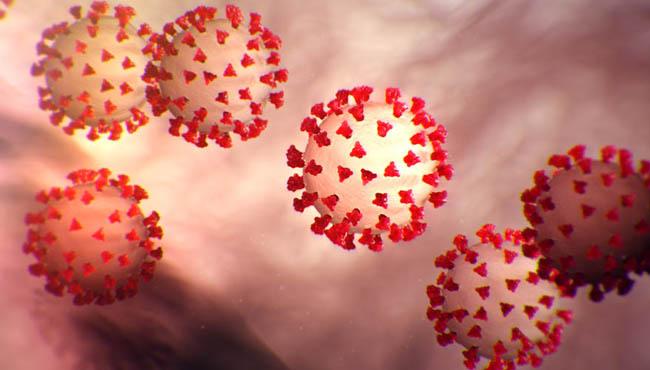Can COVID-19 Wane with Season?

Image for representational use only.Image Courtesy : WANE.Com
US President Donald Trump had said way back in February, when the coronavirus pandemic hadn’t touch the United States—“There’s a theory that, in April, when it gets warm — historically, that has been able to kill the virus. So we don’t know yet; we’re not sure yet.”
Yes, the seasonality of many viruses that cause epidemic in a particular season, is a fact. And, this observation is not a new one, but can be dated back to the time of Hippocrates and Thucydides, 2,500 years ago. But, why this happens is still driving a plethora of researches across the world. So, whether it can simply be extrapolated to the current pandemic of COVID-19, as stated by Trump, requires crucial consideration. The available information from studies on other diseases don’t seem to provide much support that COVID-19 will disappear all of a sudden as the temperature rises.
Nancy Messonnier, the point person of COVID-19 at the US Centre for Disease Control and Prevention (CDC), has said—“I would caution over-interpreting that hypothesis. If the seasons do affect SARS-CoV-2, it also could defy that pattern in this first year and keep spreading, because humanity has not had a chance to build immunity to it.”
Micaela Mertinez, infectious disease ecologist at the University of Columbia, published her paper titled “The Calendar of Epidemics: Seasonal Cycles of Infectious Diseases” in Plos Pathogens which includes a catalogue of 68 diseases and their peculiar cycles. She writes,“Except in the equatorial regions, respiratory syncytial virus (RSV) is a winter disease, but chickenpox favours the spring. Rotavirus peaks in December or January in the U.S. Southwest, but in April and May in the Northeast. Genital herpes surges all over the country in the spring and summer, whereas tetanus favours midsummer; gonorrhea takes off in the summer and fall, and pertussis has a higher incidence from June through October. Syphilis does well in winter in China, but typhoid fever spikes there in July. Hepatitis C peaks in winter in India but in spring or summer in Egypt, China, and Mexico. Dry seasons are linked to Guinea worm disease and Lassa fever in Nigeria and hepatitis A in Brazil.”
Also read: COVID-19 Is Now a Pandemic: Exponential Growth Rate of Coronavirus Dangerous
Seasonality can also be understood by the diseases spread by insects like that of dengue fever, chikungunya, African sleeping sickness, Japanese encephalitis, etc. There exists a virus that spikes in a particular season of the year in the same environment and the same location, which has been a topic of research for Neal Nathanson, an emeritus professor of microbiology at University of Pennsylvania. Nathanson believes that the variation is independent of human activity, and what is more important is the viability of the pathogen outside the human body in the particular season.
The genetic material of some kinds of viruses, for example, is not covered by the capsid protein alone, but also by a lipid membranous material called the envelope. Through the envelop, the virus clings to the host cell and proliferates here. Nathanson says, “Viruses with envelopes are more fragile and vulnerable to adverse conditions.”
Sandeep Ramalingam, virologist at the University of Edinburgh, published a study in Scientific Reports in 2019, where nine viruses were studied about their presence and seasonality. In the study, some 56,000 respiratory samples were taken over a period of over six years from people who got medical treatment in the area. The study says that envelope viruses have a very definite seasonality.
Along with the envelop present in some viruses, what matters most is absolute humidity, that explains the seasonality of the viruses, according to Jeffrey Shaman, a climate geophysicist at Columbia. Absolute humidity signifies the total amount of water vapour present in a given volume of air. In the paper published in Plos Biology, in 2010, led by Jeffrey Shaman, it was found that absolute humidity is a driving force for the onset of influenza epidemic. When in winter the absolute humidity declines, the influenza virus spikes, and in summer when it rises, the viral spread reduces. But how the absolute humidity helps in the viral spike is not yet known.
The SARS-CoV-2, the causative agent of the COVID pandemic, has an envelope. So will the viral spread wane as summer approaches in April, when absolute humidity rises with the temperature? But, the two earlier coronaviruses that caused worldwide panic, the SARS and the MERS, provide no clues. The SARS broke out in late 2002 and had been contained by the summer of 2003. The MERS caused outbreaks in hospitals but was not so contagious from man to man as the COVID-19. Neither viruses lasted too long so that any seasonal cycle could emerge.
Moreover, the virus for COVID-19 can clearly spread in warm and humid conditions. For example, Singapore has shown an increasing number of cases, despite the country’s warm and humid condition.
The other most important aspect is the overall immunity level of a population. Studies have shown that human immunity also changes throughout the year. In a particular period of the year, some immune cells’ productions go up, thus emboldening the immunity, whereas, other sets of immune cells can become more powerful in a different period of the year. How human immunity will fare as regards to COVID-19 is still unknown. Also, humanity will take some time to develop a population-wide immunity against the novel coronavirus.
These lines of researches may get the limelight in the time of the COVID pandemic, but as of now, nobody can say anything with a definitive conclusion that seasonal change will rescue humanity out of the pandemic or whether humanity will have to fight it without much help from the environment.
Get the latest reports & analysis with people's perspective on Protests, movements & deep analytical videos, discussions of the current affairs in your Telegram app. Subscribe to NewsClick's Telegram channel & get Real-Time updates on stories, as they get published on our website.
























